Kawase Hasui: Master of Shin Hanga landscape prints
The work by Kawase Hasui (1883–1957) is a prime example of the Shin Hanga movement. Hasui’s prints are celebrated for their evocative depictions of Japan’s landscapes, capturing the beauty of the country’s natural and urban environments with a poetic sensibility. His mastery of light and shadow, attention to detail, and ability to convey mood and atmosphere have made him one of the most revered landscape artists in Japanese art history.
 Meguro Fudō Temple, Kawase Hasui, 1931-1935. Source: Wikimedia Commonsꜛ (license: public domain)
Meguro Fudō Temple, Kawase Hasui, 1931-1935. Source: Wikimedia Commonsꜛ (license: public domain)
Biography
Kawase Hasui (川瀬 巴水) was born as Kawase Bunjiro on May 18, 1883, in the Shiba district of Tokyo, Japan. Coming from a family involved in business, Hasui was initially expected to take over the family trade. However, his passion for art led him to pursue a different path. From a young age, Hasui showed a deep interest in painting and the natural world, which would later become the central themes of his artistic career.

Photograph of Hasui Kawase, 1939. Source: Wikimedia Commonsꜛ (license: public domain)
At the age of 26, Hasui began formal training in art under the tutelage of Kaburagi Kiyokata, a prominent Nihonga painter known for his bijin-ga (pictures of beautiful women). Under Kiyokata’s guidance, Hasui honed his skills in traditional Japanese painting, but it was his interest in landscape art that truly set him apart. Hasui was deeply influenced by the Meiji-era sense of nostalgia for the rapidly disappearing traditional Japan, which became a recurring theme in his work.
In 1918, Hasui was introduced to Watanabe Shōzaburō, the influential publisher who was instrumental in the Shin Hanga movement. Watanabe recognized Hasui’s talent for capturing the beauty of Japan’s landscapes and encouraged him to create woodblock prints. This collaboration marked the beginning of Hasui’s prolific career in printmaking, which would span several decades and produce over 600 prints.
 Photograph of the popular Meiji period kabuki actor Ichimura Uzaemon XV taken at the Kabukiza in 1930 in Tokyo. Kawase Hasui is the third person from the left. Source: Wikimedia Commonsꜛ (license: public domain)
Photograph of the popular Meiji period kabuki actor Ichimura Uzaemon XV taken at the Kabukiza in 1930 in Tokyo. Kawase Hasui is the third person from the left. Source: Wikimedia Commonsꜛ (license: public domain)
Hasui’s work was celebrated for its poetic portrayal of Japanese landscapes, often depicting serene and tranquil scenes that captured the essence of Japan’s natural beauty and traditional architecture. His prints were not only popular in Japan but also gained significant acclaim internationally, contributing to the global appreciation of the Shin Hanga movement.
 In front, left side: Kasamatsu Shirō, right side Shōzaburō Watanabe. In the back from left: Moriyama (an employees of Watanabe), Kawase Hasui, collector Robert Muller and his wife Inge, Itō Shinsui and his wife (1941). Source: Wikimedia Commonsꜛ
In front, left side: Kasamatsu Shirō, right side Shōzaburō Watanabe. In the back from left: Moriyama (an employees of Watanabe), Kawase Hasui, collector Robert Muller and his wife Inge, Itō Shinsui and his wife (1941). Source: Wikimedia Commonsꜛ
Kawase Hasui continued to create art until his death on November 7, 1957. His legacy as one of Japan’s greatest landscape artists remains intact, and his prints are considered masterpieces of modern Japanese art.
Artistic style and significance
Kawase Hasui is widely regarded as one of the most important and prolific artists of the Shin Hanga movement, particularly known for his evocative and atmospheric landscape prints. His work is characterized by a deep connection to nature, a sense of tranquility, and a masterful use of light and color.
Mastery of landscape art
Hasui’s landscapes are celebrated for their ability to capture the subtle beauty and quiet majesty of Japan’s natural and urban environments. His prints often depict rural scenes, coastal views, traditional temples, and snow-covered villages, as well as iconic urban landscapes. These works reflect Hasui’s deep appreciation for the Japanese countryside and his desire to preserve the memory of a rapidly modernizing Japan.


Left: Honmon-ji in Ikegami, Kawase Hasui. Source: Wikimedia Commonsꜛ (license: public domain) – Right: Bell Tower at Mt. Kōya, Kawase Hasui. Source: Wikimedia Commonsꜛ (license: public domain)
Unlike the dramatic and sometimes stylized landscapes of earlier ukiyo-e artists like Hiroshige and Hokusai, Hasui’s landscapes are marked by their realism and attention to detail. He meticulously rendered the textures of trees, the reflection of light on water, and the changing colors of the sky, creating prints that evoke a strong sense of place and atmosphere.


Left: Evening Snow at Terashima Village, from series Twelve Scenes of Tokyo, Kawase Hasui, 1920. Source: Wikimedia Commonsꜛ (license: public domain) – Right: Kojaku Cavern, Oga Peninsula, Kawase Hasui, 1926. Source: Wikimedia Commonsꜛ (license: public domain)
Poetic use of light and shadow
A defining characteristic of Hasui’s work is his masterful use of light and shadow to create mood and atmosphere. Influenced by Western art, particularly Impressionism, Hasui experimented with the effects of different times of day and weather conditions on the landscape. Many of his prints depict scenes at dawn, dusk, or in the soft light of early morning, where the interplay of light and shadow adds depth and dimension to the composition.


Left: Autumn at Oirase, Kawase Hasui, 1933:1935. Source: Wikimedia Commonsꜛ (license: public domain) – Right: Heirin-ji, Nobidome, Kawase Hasui, 1952. Source: Wikimedia Commonsꜛ (license: public domain)
Hasui’s use of light is often described as “poetic,” as it imbues his landscapes with a sense of serenity and introspection. His prints convey the fleeting beauty of a moment in time, whether it’s the glow of lanterns on a snowy street or the reflection of the moon on a quiet lake. This ability to capture the transient nature of light made Hasui’s work resonate deeply with viewers and contributed to his enduring popularity.
A bridge between tradition and modernity
Hasui’s work represents a bridge between traditional Japanese woodblock printing and modern artistic sensibilities. While he adhered to the traditional methods of woodblock printing, including the collaborative process with carvers and printers, his approach to subject matter and composition was distinctly modern. Hasui’s landscapes are often devoid of human figures, allowing the viewer to focus entirely on the natural environment and its inherent beauty.
His prints also reflect a modern sensitivity to the changing world, as many of his works capture scenes of a disappearing Japan, whether it be a rural village being encroached upon by urban development or a traditional temple standing quietly amidst modern surroundings. This tension between the old and the new is a recurring theme in Hasui’s work, making his prints not only beautiful works of art but also poignant reflections on the passage of time and the impact of modernization.
Impact and legacy
Kawase Hasui’s contribution to the Shin Hanga movement was immense, and his work played a significant role in the international success of Japanese woodblock prints in the 20th century. His ability to evoke the beauty and tranquility of Japan’s landscapes made his prints highly sought after by collectors, both in Japan and abroad.
In 1956, just a year before his death, Hasui was honored by the Japanese government as a Living National Treasure for his contributions to the art of woodblock printing. This recognition solidified his status as one of Japan’s greatest landscape artists.
Hasui’s prints continue to be celebrated for their technical excellence, emotional depth, and timeless beauty. His work remains a source of inspiration for contemporary artists and a cherished part of Japan’s cultural heritage.
Notable works
Throughout his prolific career, Kawase Hasui produced an extensive body of work that includes some of the most iconic prints of the Shin Hanga movement. Here are some of his most important series:
- Twelve Scenes of Tokyo (1919–1921)
- Souvenirs of Travel, Vol. I (1919–1920) Vol. II (1921) Vol. III (1924–1929)
- The Mitsubishi Villa in Fukagawa (1920)
- Selected Views of Japan (1922–1926)
- Twenty Views of Tokyo (1925–1930)
- New Eight Views of Japan (1927)
- Selected Views of the Tokaido Road (1931–1947)
- Collected Views of Japan, Eastern Japan (1932–1936)
- Collected Views of Japan II, Kansai (1933–1943)
- Collected Views of Kennan Mountain Villa in Moto-Hakone (1935)
- One-hundred Views of New Tokyo (1936)
- Shinto and Its Architecture (1936)
- Eight Views of Korea (1939)
- Pacific Transport Lines(1952)
- Snow at Zōjō-ji (1953)
- Hall of the Golden Hue, Hiraizumi (1957; Kawase’s final work)
Examples


Left: Tenno-ji, Osaka, from the series Souvenirs of Travel III (Tabi miyage dai sanshu), Kawase Hasui, 1927. Source: Wikimedia Commonsꜛ (license: public domain) – Right: Shiba Zōjōji, Kawase Hasui, 1925. Source: Wikimedia Commonsꜛ (license: public domain)

Komagata Embankment, from series Twelve Scenes of Tokyo, Kawase Hasui, 1920. Source: Wikimedia Commonsꜛ (license: public domain)
 Snow at Zōjō-ji, Kawase Hasui, 1953. Source: Wikimedia Commonsꜛ (license: public domain)
Snow at Zōjō-ji, Kawase Hasui, 1953. Source: Wikimedia Commonsꜛ (license: public domain)


Left: Tabi miyage dai nishū, Ojiya Asahi-bashi (Asahi Bridge in Ojiya), Kawase Hasui, 1921. Source: Wikimedia Commonsꜛ (license: public domain) – Right: Part of the Byōdō-in Temple at Uji, Kawase Hasui, 1921. Source: Wikimedia Commonsꜛ (license: public domain)
 Pond at Benten Shrine in Shiba, Kawase Hasui, 1929. Source: Wikimedia Commonsꜛ (license: public domain)
Pond at Benten Shrine in Shiba, Kawase Hasui, 1929. Source: Wikimedia Commonsꜛ (license: public domain)


Left: Snow in Mukojima, Kawase Hasui, 1931. Source: Wikimedia Commonsꜛ (license: public domain) – Right: Shinagawa, Kawase Hasui, 1931 . Source: Wikimedia Commonsꜛ (license: public domain)


Left: Moon at Magome, Kawase Hasui, 1930. Source: Wikimedia Commonsꜛ (license: public domain) – Right: Nikkō Kaidō, Kawase Hasui, 1930. Source: Wikimedia Commonsꜛ (license: public domain)


Left: Nenokuchi Lake Towada, Kawase Hasui, 1933:1935. Source: Wikimedia Commonsꜛ (license: public domain) – Right: Hoshi Hot Spring in Jōshū, Kawase Hasui, 1933:1935. Source: Wikimedia Commonsꜛ (license: public domain)


Left: Evening at Tagonoura, Kawase Hasui, 1940 . Source: Wikimedia Commonsꜛ (license: public domain) – Right: Hikawa park in Omiya (Omiya Hikawa no koen), Kawase Hasui, 1930. Source: Wikimedia Commonsꜛ (license: public domain)


Left: Hall of the Golden Hue, Hiraizumi, Kawase Hasui, 1957. Source: Wikimedia Commonsꜛ (license: public domain) – Right: Evening of Ushibori, Kawase Hasui, 1930s. Source: Wikimedia Commonsꜛ (license: public domain)


Left: Ioridani Mountain Pass, Kawase Hasui, 1923. Source: Wikimedia Commonsꜛ (license: public domain) – Right: Lake Toya, Hokkaido, Kawase Hasui, 1933. Source: Wikimedia Commonsꜛ (license: public domain)


Left: Nagoya Castle (Nagoya-jō), from the series Selected Views of the Tōkaidō Road, Kawase Hasui, 1932. Source: Wikimedia Commonsꜛ (license: public domain) – Right: Snow at Zōjō-ji (Yuki no Zōjō-ji), Kawase Hasui. Source: Wikimedia Commonsꜛ (license: public domain)
 Frosty Morning in Nagaoka, Izu, Kawase Hasui. Source: Wikimedia Commonsꜛ (license: public domain)
Frosty Morning in Nagaoka, Izu, Kawase Hasui. Source: Wikimedia Commonsꜛ (license: public domain)
 Narusawa no Fuji, Kawase Hasui, 1968. Source: Wikimedia Commonsꜛ (license: public domain)
Narusawa no Fuji, Kawase Hasui, 1968. Source: Wikimedia Commonsꜛ (license: public domain)

Miyajima in the mist (Kiri no Miyajima), Kawase Hasui, 1947. Source: Wikimedia Commonsꜛ (license: public domain)
 Ushibori, Kawase Hasui, 1930. Source: Wikimedia Commonsꜛ (license: public domain)
Ushibori, Kawase Hasui, 1930. Source: Wikimedia Commonsꜛ (license: public domain)
 Korakuen Park, Okayama, Kawase Hasui, 1934. Source: Wikimedia Commonsꜛ (license: public domain)
Korakuen Park, Okayama, Kawase Hasui, 1934. Source: Wikimedia Commonsꜛ (license: public domain)
 Furukawa Embankment at Dusk, Kawase Hasui. Source: Wikimedia Commonsꜛ (license: public domain)
Furukawa Embankment at Dusk, Kawase Hasui. Source: Wikimedia Commonsꜛ (license: public domain)
 Hyōjōgawara in Sendai, Kawase Hasui, 1919. Source: Wikimedia Commonsꜛ (license: public domain)
Hyōjōgawara in Sendai, Kawase Hasui, 1919. Source: Wikimedia Commonsꜛ (license: public domain)


Left: Farmhouse under Snowy Trees at Evening (Christmas Card), Kawase Hasui, 1946. Source: Wikimedia Commonsꜛ (license: public domain) – Right: Boat on a Snowy Day, Kawase Hasui, 1930. Source: Wikimedia Commonsꜛ (license: public domain)

Red pagoda in the snow, Kawase Hasui, 1930. Source: Wikimedia Commonsꜛ (license: public domain)


Left: Unknown title, Kawase Hasui, 1931. Source: Wikimedia Commonsꜛ (license: public domain) – Right: Unknown title, Kawase Hasui, 1931. Source: Wikimedia Commonsꜛ (license: public domain)
 Sakurajima, Kagoshima, from the series Selected Views of Japan, Kawase Hasui. Source: Wikimedia Commonsꜛ (license: public domain)
Sakurajima, Kagoshima, from the series Selected Views of Japan, Kawase Hasui. Source: Wikimedia Commonsꜛ (license: public domain)


Left: Farm descent in Shiobara, Kawase Hasui. Source: Wikimedia Commonsꜛ (license: public domain) – Right: Okane Path in Shiobara, Kawase Hasui. Source: Wikimedia Commonsꜛ (license: public domain)


Left: Cloudy Day at Yaguchi Ferry, Kawase Hasui. Source: Wikimedia Commonsꜛ (license: public domain) – Right: Shiogama in Shiobara, Kawase Hasui. Source: Wikimedia Commonsꜛ (license: public domain)
 Matsushima in the Moonlight (Tsuki no Matsushima), Kawase Hasui. Source: Wikimedia Commonsꜛ (license: public domain)
Matsushima in the Moonlight (Tsuki no Matsushima), Kawase Hasui. Source: Wikimedia Commonsꜛ (license: public domain)
 Sanshu Zentsū-ji, Kawase Hasui, 1937. Source: Wikimedia Commonsꜛ (license: public domain)
Sanshu Zentsū-ji, Kawase Hasui, 1937. Source: Wikimedia Commonsꜛ (license: public domain)
Conclusion
Kawase Hasui is remembered as one of the most important and influential landscape artists of the Shin Hanga movement. His prints, which capture the serene beauty of Japan’s landscapes with poetic light and masterful technique, have earned him a lasting place in the history of Japanese art. Hasui’s ability to evoke a sense of peace, nostalgia, and contemplation in his work continues to resonate with viewers, making his prints cherished by collectors and art lovers around the world. His legacy as a master of landscape art indeed sets an enduring mark on the world of woodblock printing.
References and further reading
- Chris Uhlenbeck, Jim Dwinger, Philo Ouweleen, Shin Hanga - Die »Neuen Drucke« Japans 1900-1950, 2022, Hatje Cantz, ISBN: 9783775752190
- Kawase Hasui, Kawase Hasui – Woodblock print Collection (川瀬巴水木版画集), 2017, Abe Shuppan, ISBN: 9784872424485
- viewingjapaneseprints.netꜛ
- Kawase Hasui on ukiyo-e.orgꜛ
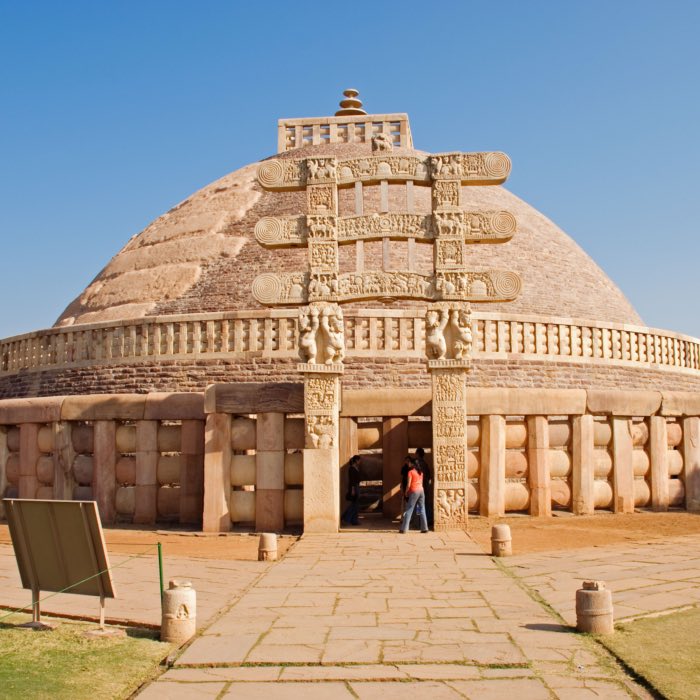
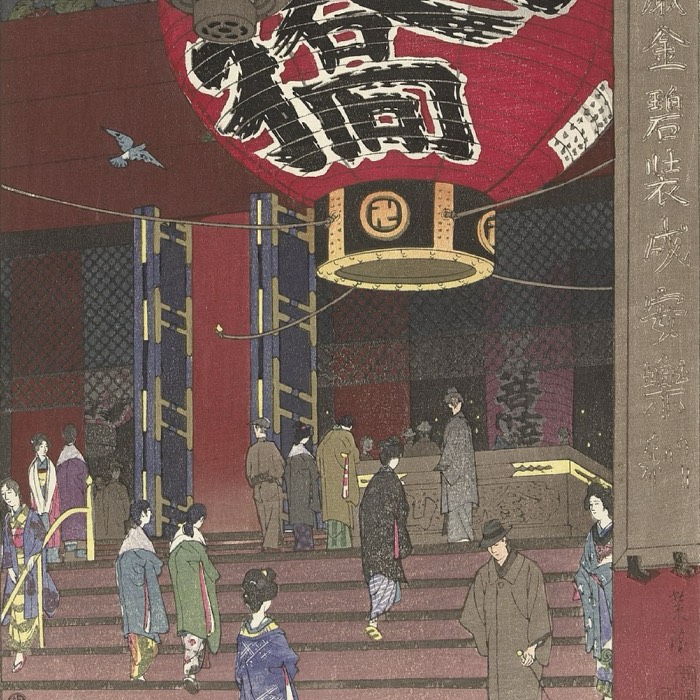
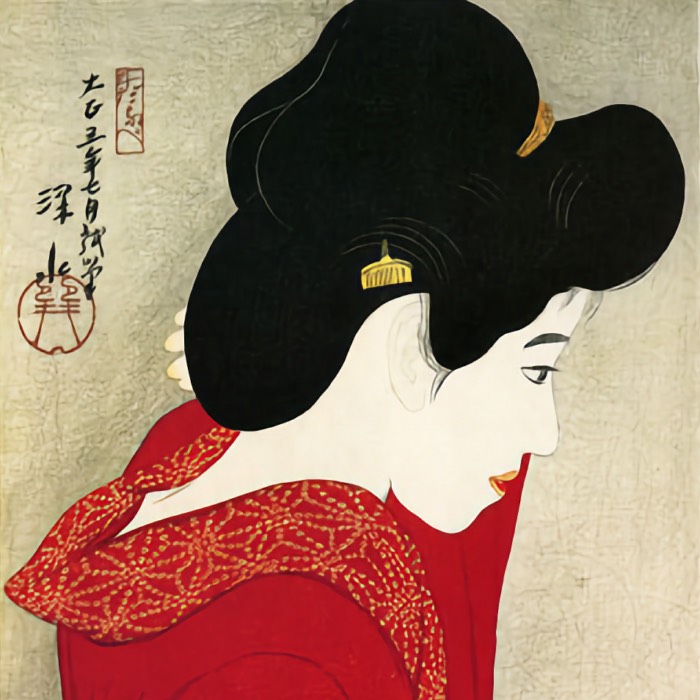

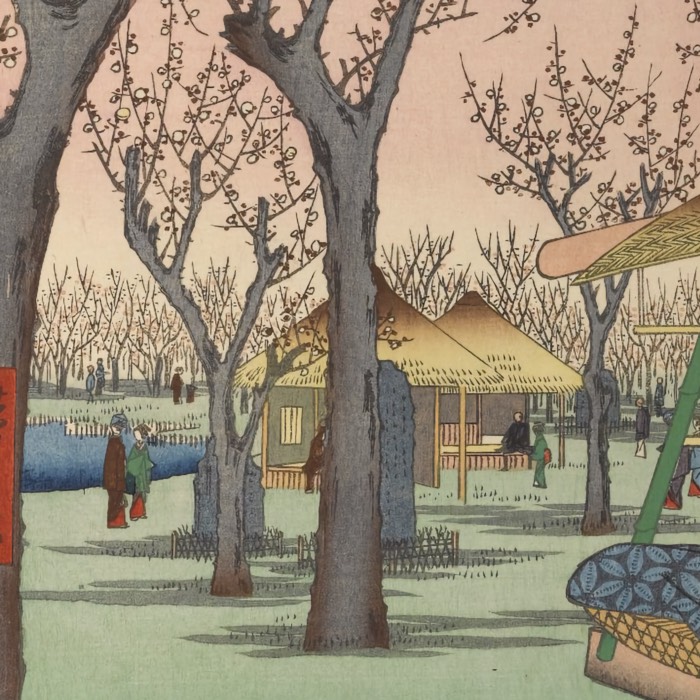
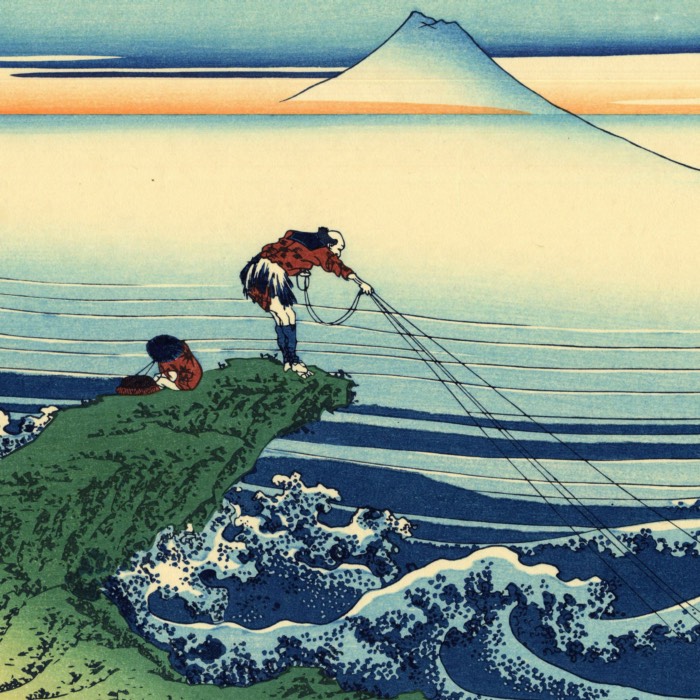
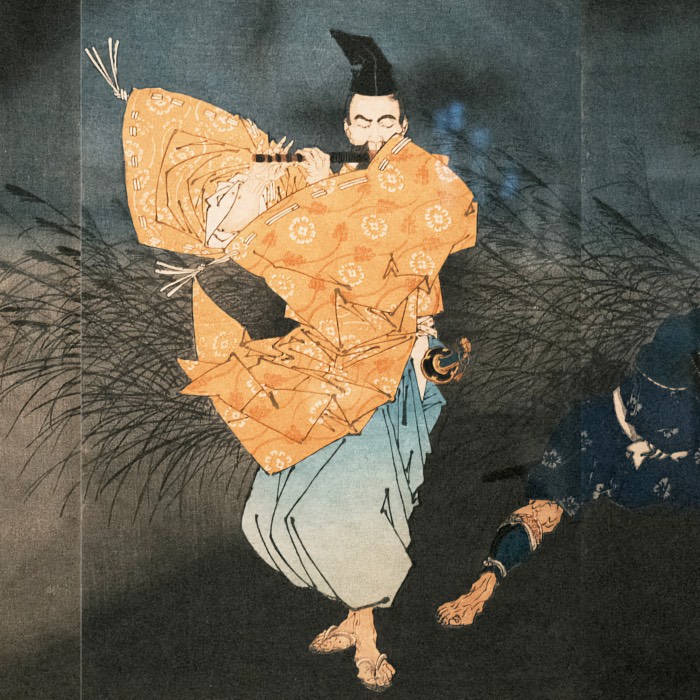
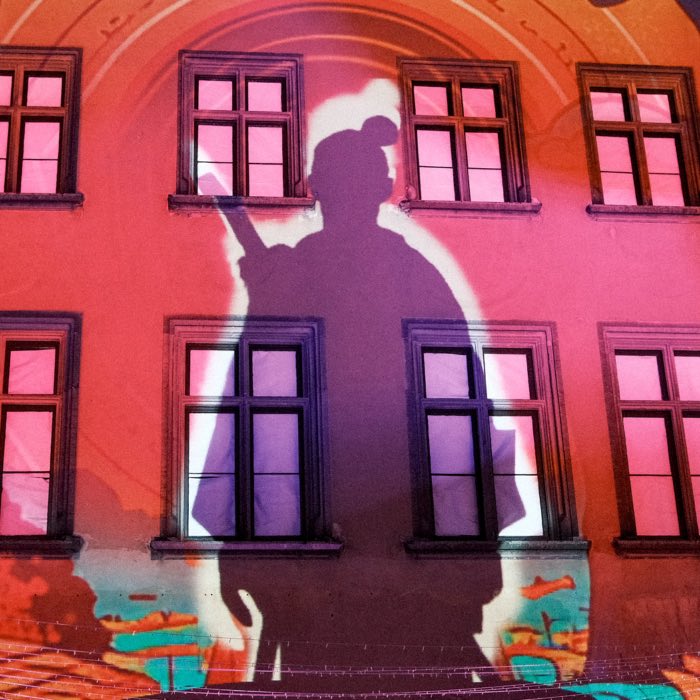
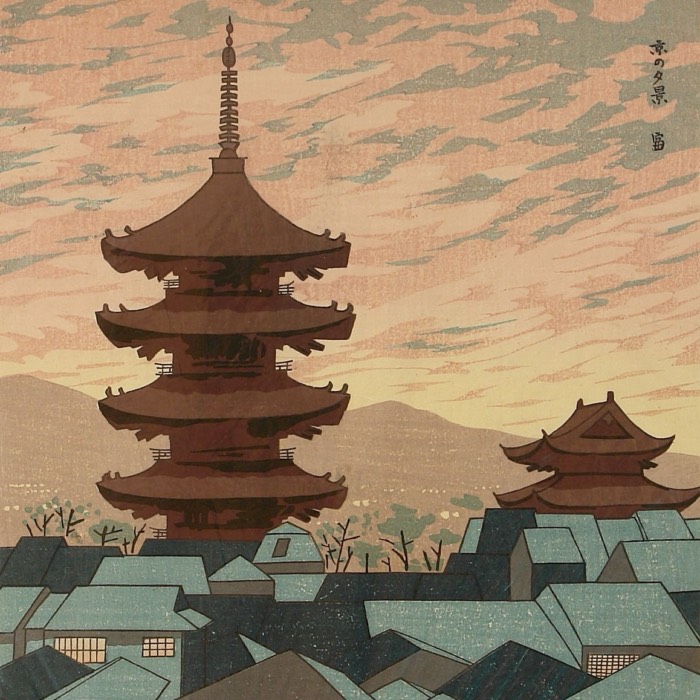

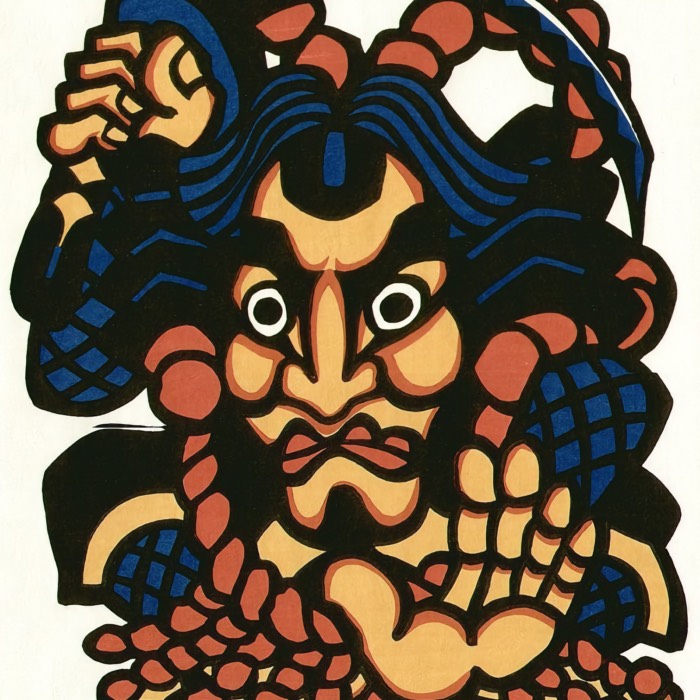
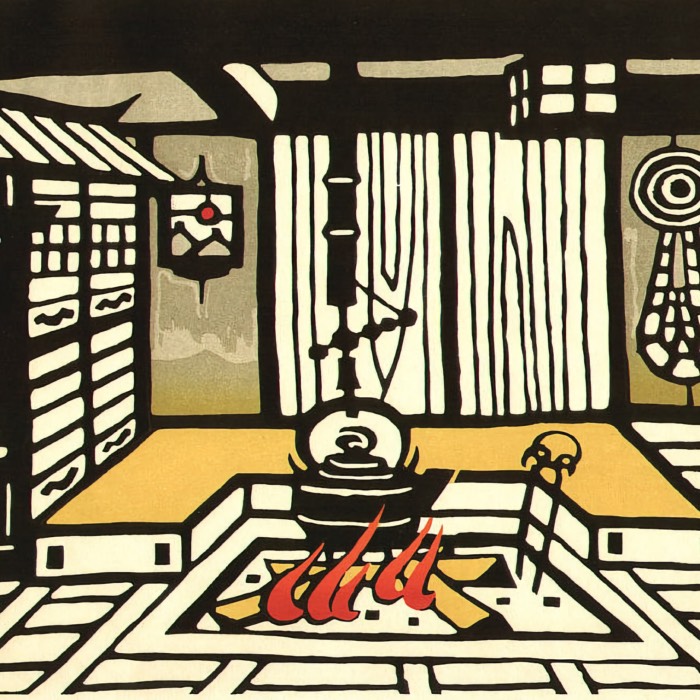
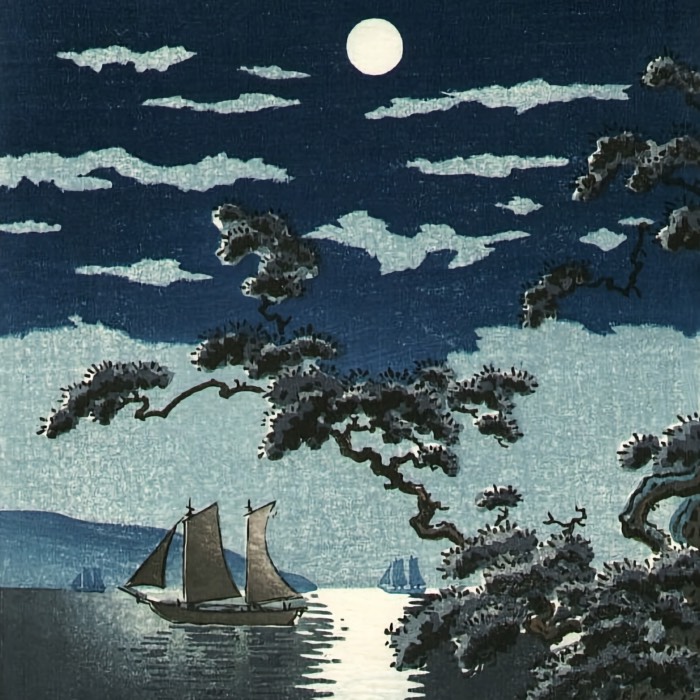
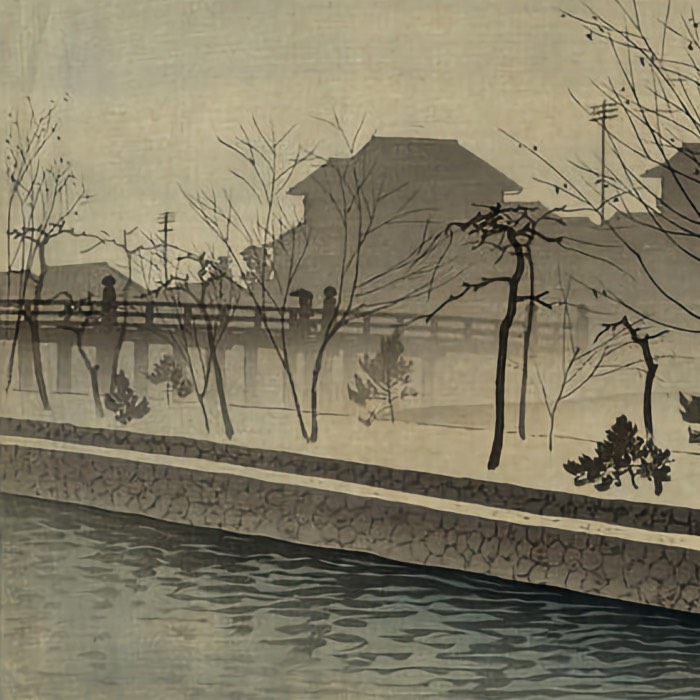
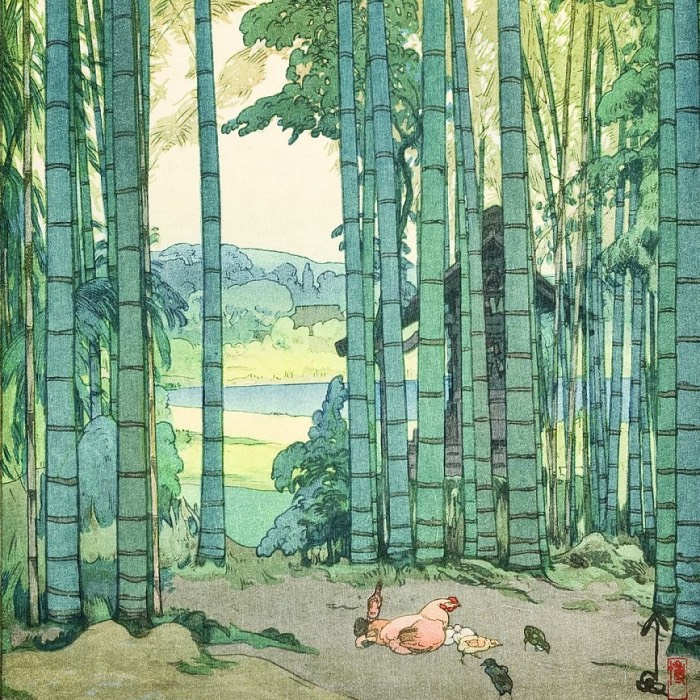
comments